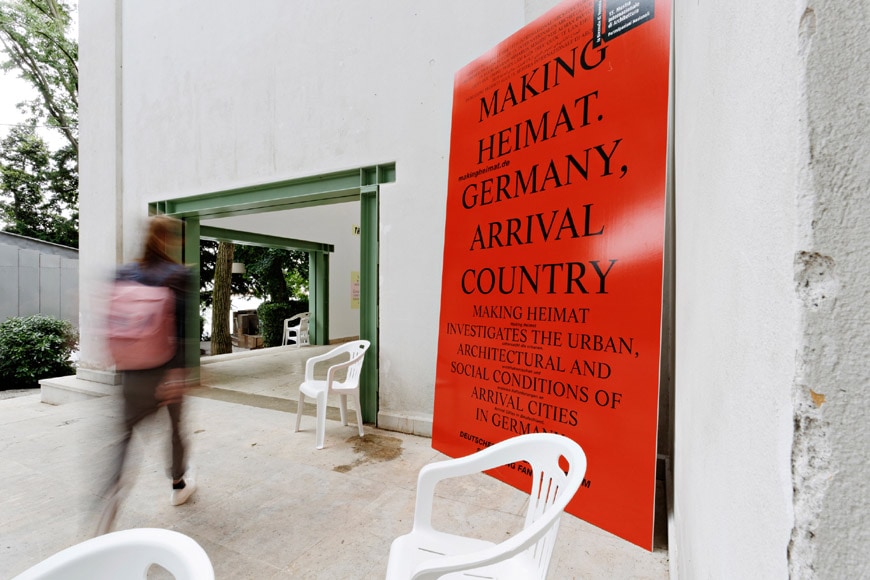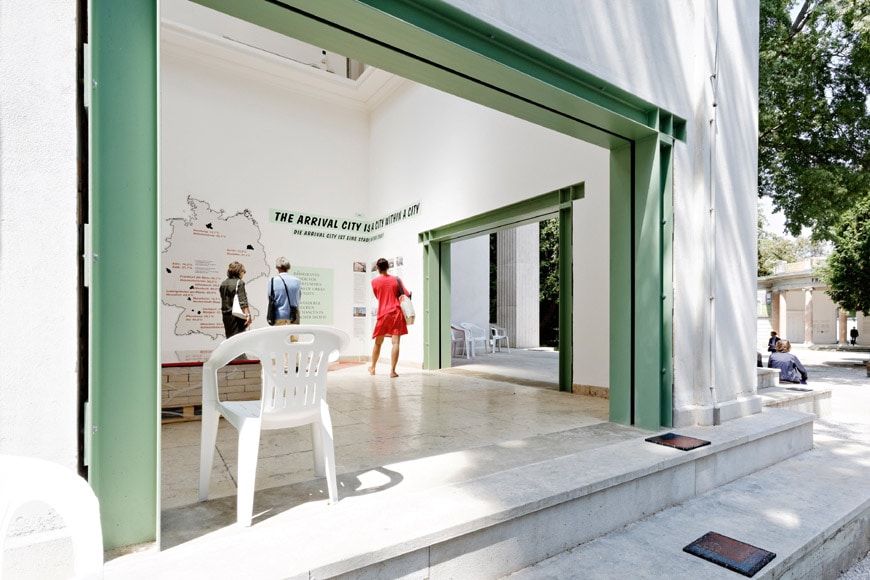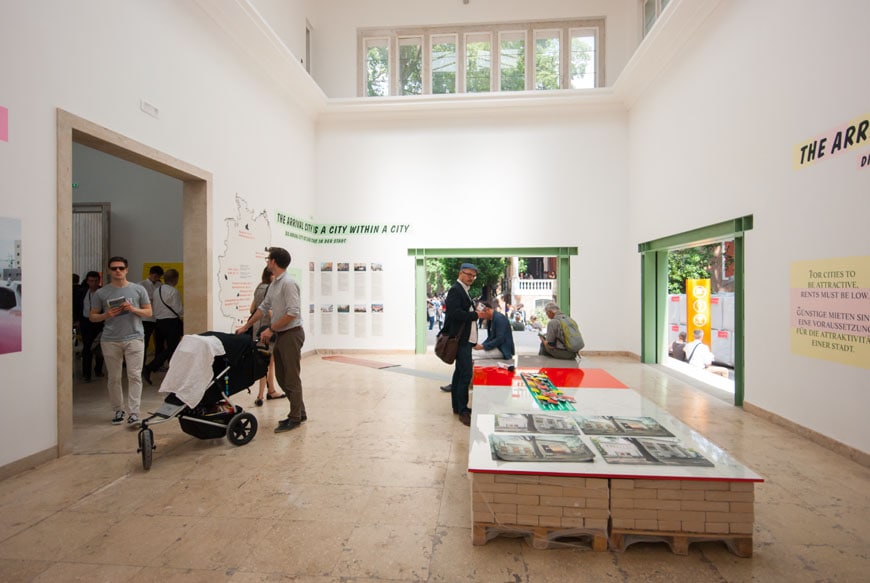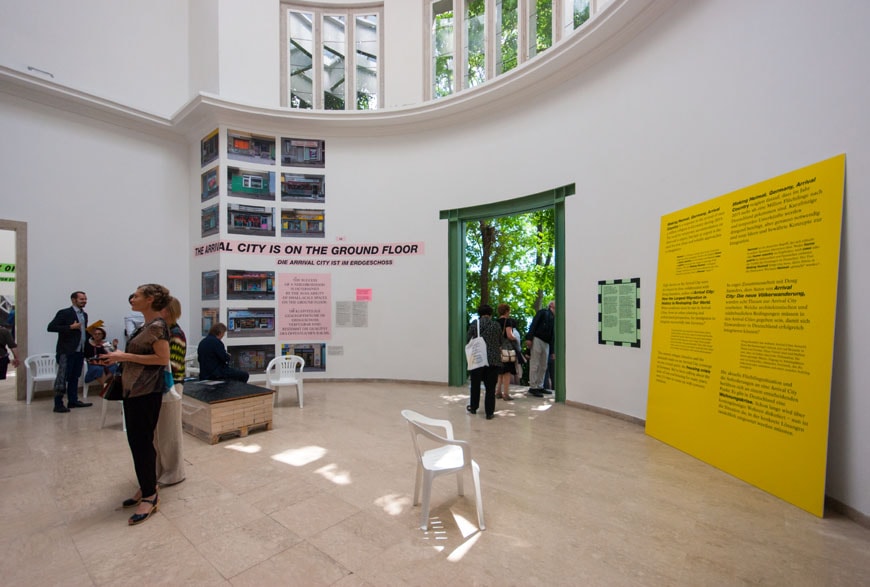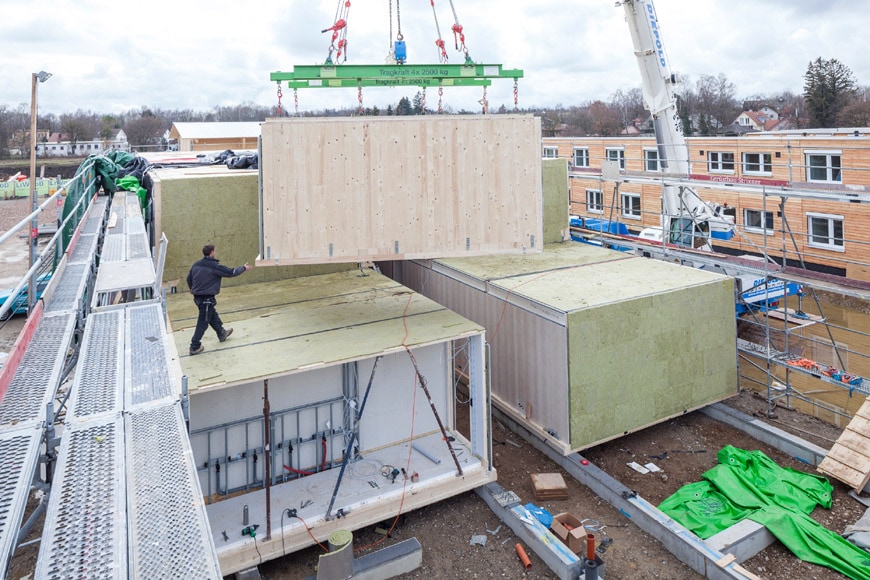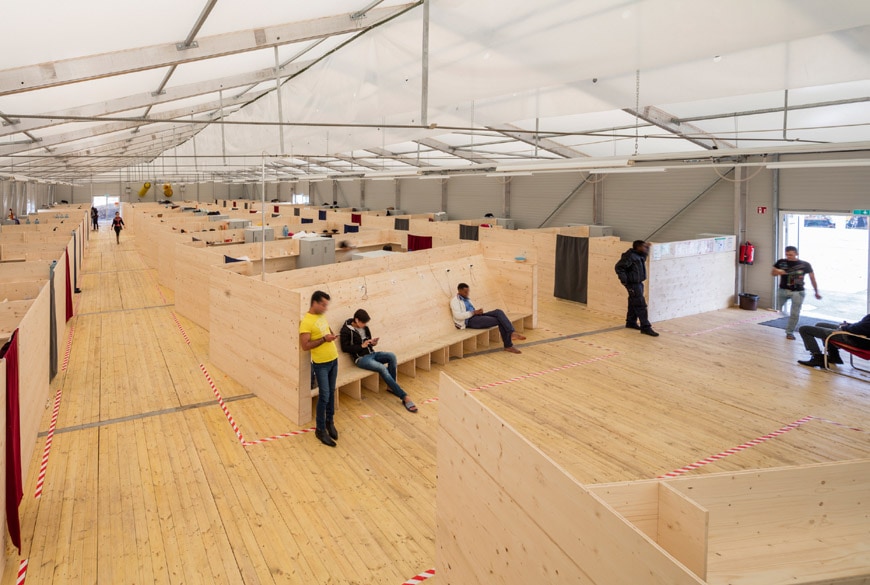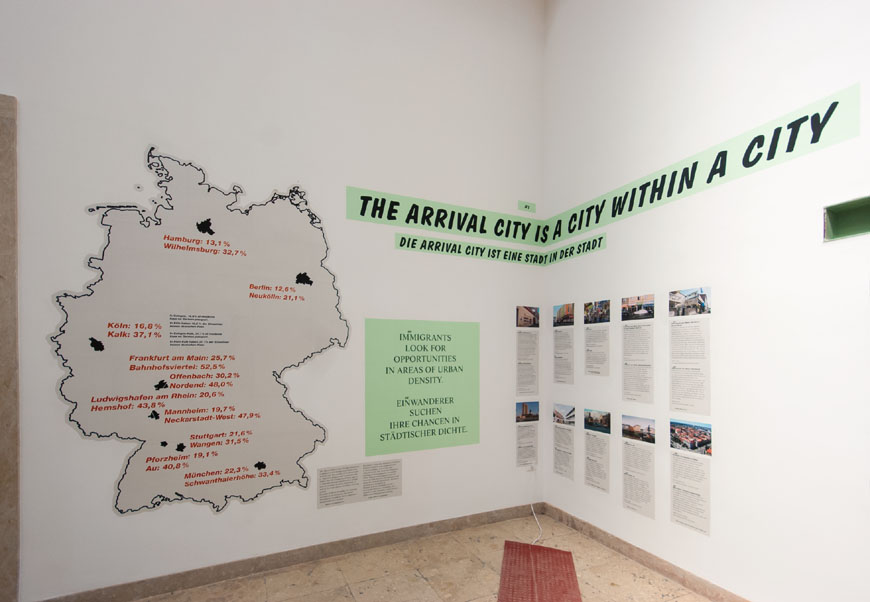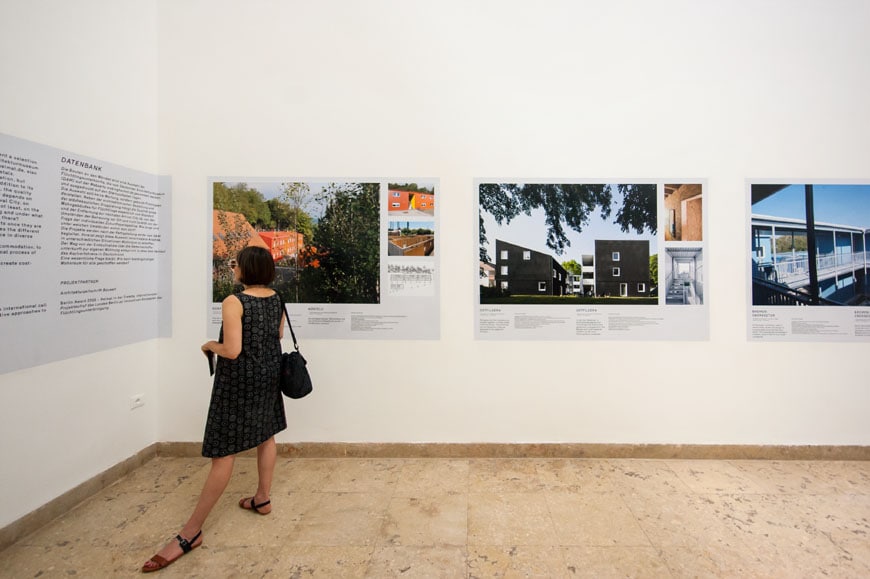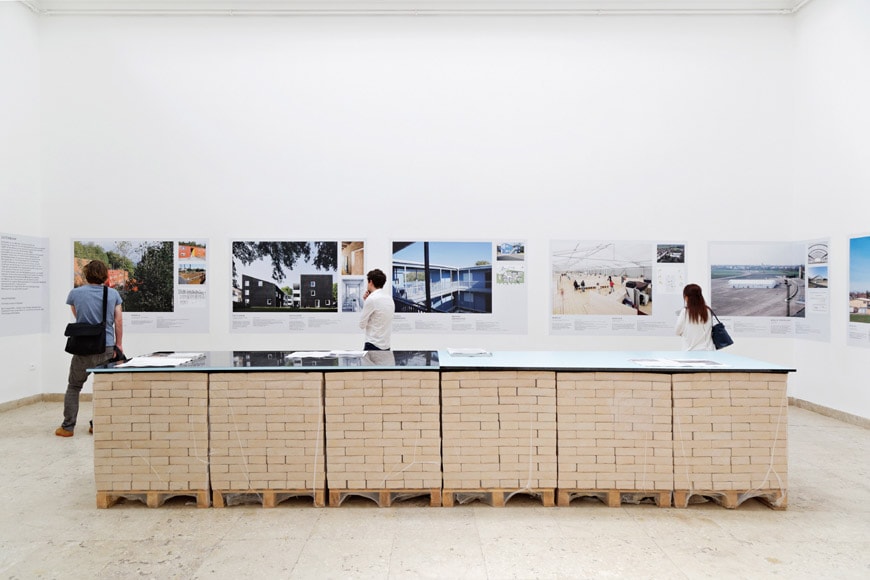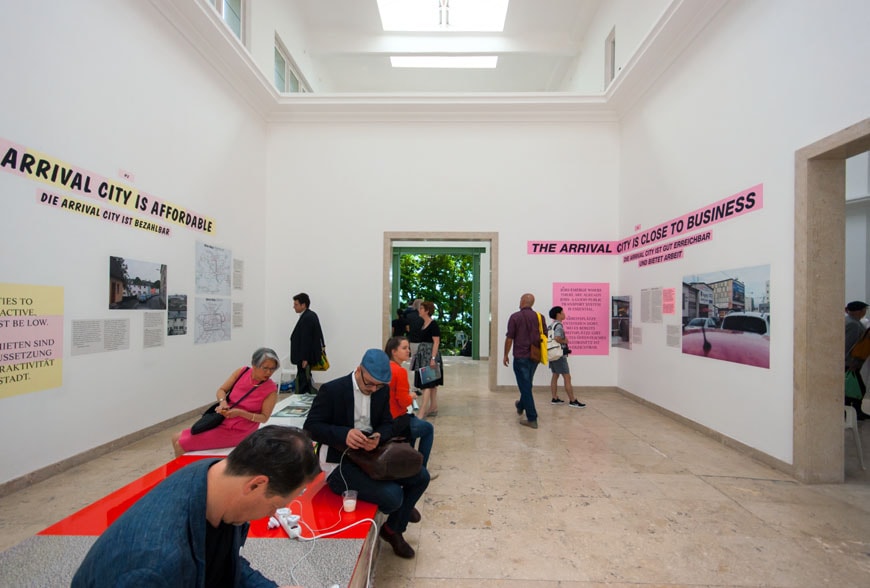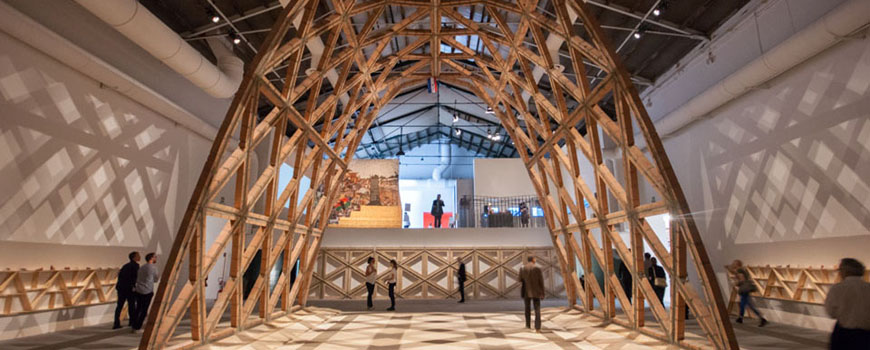Making Heimat, Pavilion of Germany | Venice Architecture Biennale 2016
La biennale di Venezia
General commissioner: Peter Cachola Schmal, Director DAM
Curator : Oliver Elser, Curator DAM
Exhibition design : Something Fantastic.
Making Heimat. Germany, Arrival Country.
German Pavilion, 15th International Architecture Exhibition – La Biennale di Venezia 2016
Photo © Felix Torkar.
Making Heimat. Germany, Arrival Country
Pavilion of Germany |15th Venice Architecture Biennale
Four new large openings framed in steel have transformed the German pavilion for the 2016 edition of the Venice Architecture Biennale. The result is an open house that doesn’t close at night as usual for the other pavilions; a space that symbolizes a Country that hosts more immigrants than any other in Europe and, in 2015, received over a million refugees.
Making Heimat. Germany, Arrival Country.
German Pavilion, 15th International Architecture Exhibition – La Biennale di Venezia 2016
Photo © Kirsten Bucher.
Curated by the Deutsches Architekturmuseum (DAM) in Frankfurt-am-Main, “Making Heimat. Germany, Arrival Country” investigates an array of fundamental issues: what are the challenges the cities which receive refugees and immigrants have to face? What are the mandatory prerequisites to transform those who come from another country into truly integrated citizens? What the role of architects and urban planners in this delicate process should be?
Making Heimat. Germany, Arrival Country.
German Pavilion, 15th International Architecture Exhibition – La Biennale di Venezia 2016.
Photos © Inexhibit 2016
DAM, in collaboration with Doug Saunders, a Canadian journalist and the author of the bestseller “Arrival Country”, coined the 8 points of the Arrival City; namely, the architectural and urban conditions which should be respected to facilitate a successful integration capable to create the “Heimat“, a world which in German roughly means “feeling at home”.
Architect: Gerstberger Architekten GmbH, Munich / LiWood, Munich
Refugee accommodation, Munich
Assembly of the modules / Photo: © Michael Heinrich
Architect: Jan Schabert (günther & schabert Architekten), Munich
Light-frame construction hall emergency program, Munich
Light-frame hall, inside / Photo: © Michael Heinrich.
The “arrival cities” need affordable dwellings located in urban areas where a mix of housing and work spaces – both commercial and manufacturing – is possible; such neighborhoods should also have good schools and should be connected to an efficient public transport network.
In summary, the eight points are: the Arrival City is a city within a city, the Arrival City is affordable, the Arrival City is close to business (it is easy to reach and offers job opportunities), the Arrival City is informal; the Arrival City is self-built; the Arrival city is on the ground floor, the Arrival city is a network of immigrants, the Arrival City needs the best schools.
Architect: u3ba Arge camilo hernandez urban 3 + Harald Baumann Baumannarchitects, Stuttgart. Apartments for refugees and the homeless, Ostfildern
Exterior view / Photo: © Markus Guhl.
Architect: Trapp Wagner Architekten und Ingenieure, Hünfeld
Residential and community buildings, Hünfeld
Refugee accommodation in Hünfeld / Photo: © Dr. Michael Fladung
Such eight principles, presented in the Venice exhibition, are one of the three components of “Making Heimat”. Another element is the website www.makingheimat.de, a free-access repository of all the data used for the research, including many of the buildings designed to accommodate the refugees. A third component is the transformation of the German pavilion itself. Indeed, Berlin-based architects Something Fantastic transformed the pavilion from an austere and hermetic building into a welcoming open house.
Making Heimat. Germany, Arrival Country.
German Pavilion, 15th International Architecture Exhibition – La Biennale di Venezia 2016.
Photos © Inexhibit 2016
The exhibition layout evokes the efficiency and temporariness of first reception facilities, with long tables made with bricks which – at the end of the Biennale – will be used to close the four openings made in the pavilion’s facades; large and colorful graphic panels fixed to the walls report information and data on the migration fluxes to Germany; seating is provided both indoor and outdoor to allow people to have a break, read and work taking advantage of the Wi-Fi connection and electric supply available for free: a sort of an “Arrival City” in Venice.
Making Heimat. Germany, Arrival Country.
German Pavilion, 15th International Architecture Exhibition – La Biennale di Venezia 2016
Photo © Kirsten Bucher
Making Heimat. Germany, Arrival Country.
German Pavilion, 15th International Architecture Exhibition – La Biennale di Venezia 2016.
Photo © Inexhibit 2016

Built in 1807, the Giardini della Biennale (Biennale’s Gardens) is the main venue of the annual art and architecture exhibitions of the Venice Biennale
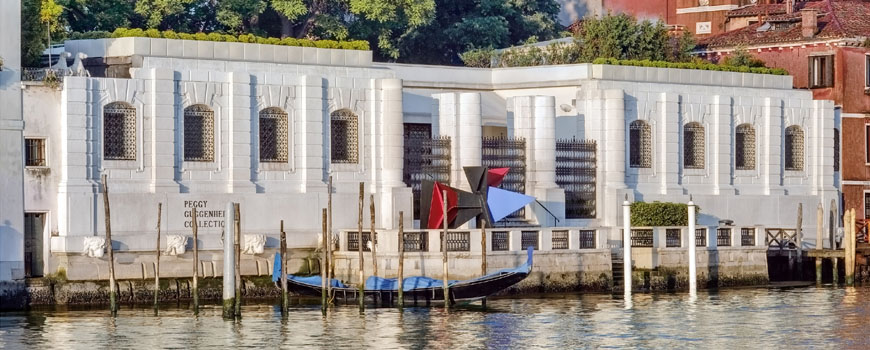
Venice
copyright Inexhibit 2025 - ISSN: 2283-5474


